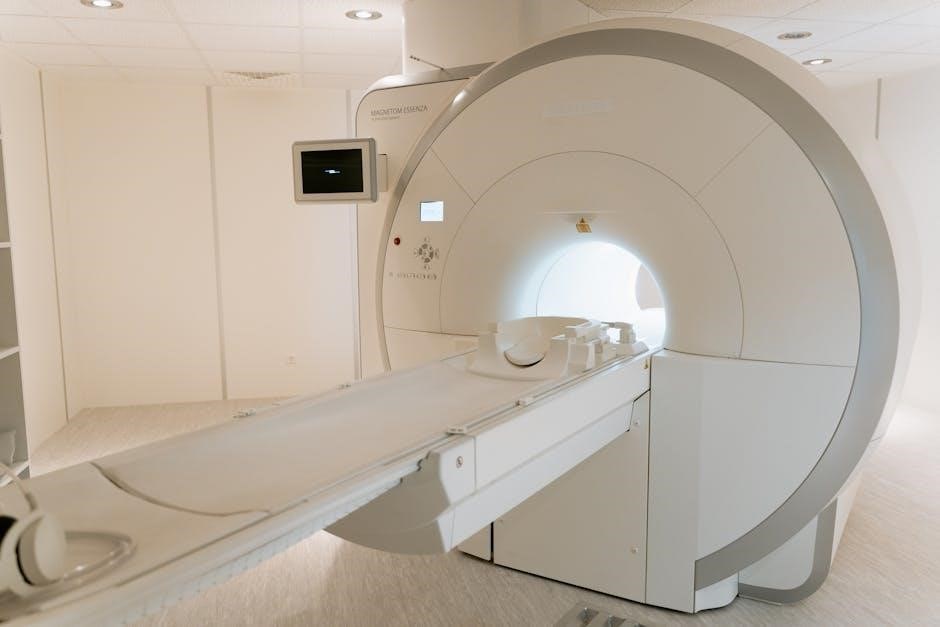The DiSC Assessment PDF is a comprehensive tool designed to help individuals understand their behavioral styles and improve personal and professional interactions. It provides insights into the four primary DiSC styles—D, i, S, and C—offering a framework for self-awareness and growth. This resource is widely used for personality development, workplace communication, and team building, making it a valuable asset for both individuals and organizations seeking to enhance collaboration and leadership skills.
1.1 Overview of DiSC Assessment
The DiSC assessment is a behavioral profiling tool rooted in the theory of psychologist William Moulton Marston. It categorizes individuals into four primary styles: Dominance (D), Influence (i), Steadiness (S), and Conscientiousness (C). The assessment involves selecting words that best describe the individual and circling corresponding letters to determine dominant styles. This process provides insights into behavioral tendencies, communication preferences, and problem-solving approaches. The results are used for personal development, workplace communication, and team collaboration, making it a versatile tool for understanding and improving interpersonal dynamics in various settings.
1;2 Importance of DiSC in Personality Development
The DiSC assessment plays a crucial role in personality development by fostering self-awareness and understanding of behavioral tendencies. It helps individuals identify their strengths and areas for improvement, enabling them to adapt their communication and problem-solving styles. By recognizing their primary DiSC style, individuals can enhance interpersonal relationships, improve teamwork, and develop leadership skills. This tool also encourages personal growth by revealing how one’s style interacts with others, promoting effective collaboration and conflict resolution. Thus, DiSC serves as a powerful framework for self-improvement and professional development, empowering individuals to maximize their potential in various settings.
1.3 Purpose of DiSC Assessment PDF
The primary purpose of the DiSC Assessment PDF is to provide individuals with a clear understanding of their behavioral styles and tendencies. It offers a structured framework for self-assessment, enabling users to identify their dominant DiSC style (D, i, S, or C) and understand how it influences their interactions and decision-making. The PDF serves as a practical guide, offering insights into personal strengths, potential challenges, and strategies for improvement. It also provides actionable recommendations for enhancing communication, collaboration, and leadership skills, making it an invaluable resource for personal and professional development. This tool helps individuals and teams work more effectively together by fostering mutual understanding and respect.

Understanding the DiSC Model
The DiSC model, developed by William Moulton Marston, categorizes personalities into four styles: Dominance (D), Influence (i), Steadiness (S), and Conscientiousness (C). It helps individuals understand their behavioral tendencies and preferences, fostering self-awareness and improved interactions with others.
2.1 History and Development of DiSC
The DiSC model was first introduced by William Moulton Marston in his 1928 book, Emotions of Normal People. Marston proposed that personality traits could be categorized into four primary behavioral styles: Dominance (D), Influence (i), Steadiness (S), and Conscientiousness (C). The modern DiSC assessment was later developed by Wiley (formerly Carlson Learning Company) in the 1970s, refining Marston’s theory into a practical tool for workplace communication and personal development. Over time, the assessment has evolved to include adaptive testing and specialized reports, enhancing its accuracy and applicability in various professional settings.
2.2 The Four DiSC Styles: D, i, S, C
The DiSC assessment categorizes personalities into four primary styles: D (Direct and Decisive), i (Energetic and Outgoing), S (Supportive and Reliable), and C (Analytical and Precise). Each style represents distinct behavioral tendencies. D-style individuals are assertive and results-driven, while i-styles focus on collaboration and enthusiasm. S-styles prioritize stability and harmony, and C-styles emphasize accuracy and structure. Understanding these styles helps individuals recognize their strengths and adapt to others’ behaviors, fostering effective communication and teamwork in professional and personal settings.
2.3 Key Differences Between DiSC and Other Personality Tests
DiSC stands out from other personality assessments like Myers-Briggs or the Big Five by focusing on observable behaviors rather than underlying traits. It emphasizes practical applications, making it highly actionable for workplace communication and teamwork. Unlike tests that categorize fixed traits, DiSC highlights adaptable behaviors, showing how individuals can adjust their styles in different contexts. This unique approach makes DiSC more straightforward and user-friendly, aligning it with real-world professional needs and fostering immediate behavioral changes. Its simplicity and applicability set it apart as a tool for improving interpersonal dynamics and leadership effectiveness.

The DiSC Assessment Process
The DiSC assessment involves a brief online test with behavioral questions, typically taking 10-15 minutes. It generates a detailed report outlining your profile, strengths, and improvement strategies.
3.1 How to Take the DiSC Assessment
To take the DiSC assessment, visit an authorized provider’s website and purchase the profile. Complete the online questionnaire, which consists of 28 pairs of adjectives. Select the options that best describe your behavior on a scale. The assessment typically takes 10-15 minutes. After submission, a detailed report is generated, outlining your DiSC style and personalized insights. Ensure you answer honestly for accurate results. The report can be downloaded as a PDF for personal development or shared with a facilitator for group sessions;
3.2 Understanding the Questionnaire
The DiSC assessment questionnaire consists of 28 pairs of adjectives, each representing different behavioral tendencies. Participants select which option in each pair best describes their actions. The forced-choice format ensures responses reflect natural tendencies. Questions focus on work-related behaviors, helping identify preferences for interaction, decision-making, and problem-solving. The questionnaire is straightforward, requiring no prior preparation. Honest responses are crucial for accurate results. The assessment is designed to measure tendencies, not traits, ensuring a clear and reliable profile that aligns with the DiSC model. This structure makes it accessible and effective for personal and professional growth.
3.3 Scoring and Interpreting Results
The DiSC assessment uses a scoring system to determine an individual’s behavioral style. Each response is analyzed to identify tendencies across eight scales, resulting in a primary and secondary style. The profile generates a detailed report, highlighting strengths, challenges, and tendencies. Interpretation focuses on understanding how these styles influence behavior in various contexts. The results provide actionable insights, enabling individuals to leverage their strengths and address potential blind spots. This personalized feedback fosters self-awareness and guides personal and professional development effectively.

DiSC Styles in Detail
This section explores the four primary DiSC styles—D, i, S, and C—highlighting their core traits, strengths, and potential challenges. Each style influences behavior uniquely.
4.1 High D: Direct and Decisive
Individuals with a High D style are assertive, results-driven, and thrive in leadership roles. They value control and action, often taking charge to achieve goals efficiently. High D personalities are confident decision-makers, preferring to focus on the big picture rather than details. While their directness can inspire others, it may sometimes come across as overly blunt. Understanding this style helps individuals balance their assertiveness with empathy, fostering stronger relationships and more effective communication in both personal and professional settings.
4.2 High i: Energetic and Outgoing
Those with a High i style are warm, sociable, and enjoy interacting with others. They thrive in dynamic environments where they can engage people and build relationships. High i individuals are naturally enthusiastic and have strong communication skills, often acting as motivators. While their outgoing nature fosters collaboration, they may struggle with depth in decision-making. Understanding this style helps them balance their energy with focus, ensuring they remain effective in both social and professional contexts while maintaining their infectious positivity.
4.3 High S: Supportive and Reliable
High S individuals are known for their patience, loyalty, and ability to provide support. They value stability and consistency, often prioritizing harmony in their relationships and environments. High S styles are excellent listeners and are adept at understanding others’ needs. While they excel in maintaining balance and providing a steady presence, they may hesitate to embrace change or assert themselves strongly. Their strengths lie in fostering trust and cooperation, making them invaluable in roles requiring empathy and stability. Encouraging them to step out of their comfort zone can help them grow personally and professionally.
4.4 High C: Analytical and Precise
High C individuals are characterized by their analytical nature, attention to detail, and preference for structure. They thrive in environments where they can focus on accuracy and precision, often excelling in roles that require meticulous planning. High C styles tend to be cautious and reserved, valuing logic over emotion. While they may struggle with spontaneity or delegation, their systematic approach ensures high-quality outcomes. Encouraging them to trust their instincts and embrace flexibility can help them balance their analytical strengths with adaptability in dynamic situations.

Applications of DiSC Assessment
The DiSC assessment enhances workplace communication, leadership development, and team collaboration by providing insights into behavioral styles, fostering self-awareness, and improving interpersonal interactions for better organizational outcomes.
5.1 Improving Workplace Communication
The DiSC assessment fosters workplace communication by helping individuals understand and adapt to different behavioral styles. By recognizing the tendencies of colleagues, employees can tailor their interactions, reducing misunderstandings and enhancing collaboration. Leaders can use DiSC insights to address communication gaps and create a more inclusive environment. Teams benefit from improved active listening, clear messaging, and a better appreciation of diverse perspectives. This leads to more effective problem-solving and stronger professional relationships, ultimately driving organizational success and a positive workplace culture.
5.2 Leadership Development
The DiSC assessment is a powerful tool for leadership development, helping leaders identify their natural tendencies and adapt their style to inspire and motivate others. By understanding their DiSC profile, leaders can enhance decision-making, improve conflict resolution, and foster a positive work environment. The assessment provides insights into emotional intelligence, communication strategies, and team dynamics. Leaders can leverage these findings to develop a more adaptable and effective approach, ensuring they connect with diverse team members. This fosters trust, collaboration, and a culture of continuous improvement, equipping leaders to drive organizational success and personal growth.
5.3 Team Building and Collaboration
The DiSC assessment enhances team building by revealing individual behavioral styles, fostering understanding and empathy among team members. By identifying strengths and potential friction points, teams can improve communication and collaboration. Leaders can use DiSC profiles to assign roles that align with natural tendencies, ensuring balanced and effective teamwork. This approach reduces conflicts and strengthens trust, creating a cohesive environment where diverse perspectives thrive. DiSC also encourages active listening and adaptability, helping teams work seamlessly together to achieve shared goals and drive organizational success through collaborative efforts.
5.4 Personal Growth and Self-Awareness
The DiSC assessment PDF serves as a powerful tool for personal growth and self-awareness, helping individuals understand their natural behavioral tendencies. By identifying strengths and areas for improvement, individuals can enhance their emotional intelligence and decision-making skills. DiSC encourages self-reflection, allowing people to recognize how their actions impact others. This awareness fosters adaptability, enabling individuals to adjust their behavior for personal and professional success. The insights gained from DiSC empower individuals to take ownership of their development, leading to a more fulfilling and purpose-driven life. Self-awareness is the cornerstone of lasting personal growth, and DiSC provides the framework to achieve it.

Advanced DiSC Concepts
This section delves into advanced DiSC concepts, exploring adaptive testing, nuanced behavioral insights, and practical applications for deeper self-awareness and effective interpersonal strategies.
6.1 Understanding DiSC Profiles
DiSC profiles provide a comprehensive overview of an individual’s behavioral style, highlighting strengths, challenges, and tendencies. These profiles categorize individuals into D, i, S, or C styles, offering insights into how they interact and make decisions. By understanding DiSC profiles, individuals can gain clarity on their natural behaviors and identify areas for personal and professional growth. This knowledge enables effective communication, collaboration, and conflict resolution. Profiles also reveal how individuals perceive others, helping them adapt their approach to foster better relationships and teamwork. Understanding DiSC profiles is a cornerstone for leveraging the assessment’s full potential in personal and organizational development.
6.2 Adaptive Testing in DiSC Assessments
Adaptive testing in DiSC assessments tailors the questionnaire to individual respondents, ensuring a more personalized and accurate experience. Unlike static tests, adaptive testing adjusts the difficulty and relevance of questions based on previous answers, refining the results. This method enhances the precision of DiSC profiles by focusing on areas where the respondent’s style is less clear. It also reduces the time required to complete the assessment while maintaining reliability. Adaptive testing ensures that each question contributes meaningfully to the final profile, making the process efficient and insightful for users seeking to understand their behavioral preferences.
6.3 The Role of Behavioral Styles in Leadership
Behavioral styles play a crucial role in leadership, as they influence how leaders interact, decision-make, and inspire others. DiSC styles—D, i, S, and C—shape leadership approaches, with each style offering unique strengths. For instance, D-style leaders excel in decisiveness, while i-style leaders thrive in motivating teams. Understanding these styles enables leaders to adapt their communication and decision-making to align with their team’s needs. By leveraging their natural tendencies and developing awareness of others’ styles, leaders can foster collaboration, build trust, and drive organizational success. This self-awareness is key to effective, adaptable leadership in diverse workplace scenarios.

DiSC Assessment Tools and Resources
DiSC offers various tools, including Everything DiSC, Leadership Assessment, and Workplace Maps, providing resources for personalized development and workplace effectiveness.
7.1 Everything DiSC Personality Assessment
The Everything DiSC Personality Assessment is a comprehensive tool that provides personalized insights into an individual’s behavioral style. It offers detailed reports, highlighting strengths and areas for improvement. The assessment is designed to enhance self-awareness, improve communication, and foster collaboration in various settings. By understanding one’s DiSC style, individuals can adapt their behaviors to work more effectively with others. This tool is widely used in workplace communication, leadership development, and team building. The PDF format allows for easy sharing and reference, making it a valuable resource for personal and professional growth. Its practical applications make it a popular choice for organizations and individuals alike.
7.2 DiSC Leadership Assessment
The DiSC Leadership Assessment is specifically designed to help leaders understand their natural leadership style and its impact on their team. It provides insights into strengths and areas for development, helping leaders adapt their approach to different situations. The assessment focuses on communication, decision-making, and conflict resolution. Leaders gain strategies to motivate their team, delegate effectively, and build trust. The PDF report offers actionable recommendations tailored to their DiSC style, making it a valuable tool for enhancing leadership effectiveness and fostering a positive work culture. This assessment is ideal for leaders seeking to improve their influence and team dynamics.
7.3 DiSC Workplace Map
The DiSC Workplace Map is a visual tool that helps teams understand their collective behavioral styles. It plots individual DiSC profiles on a map, showing where each person falls within the D, i, S, and C styles. This tool identifies team strengths, potential gaps, and opportunities for improvement. By visualizing the distribution of styles, the Workplace Map fosters better collaboration and communication. It also aids in identifying who may naturally take on specific roles, such as leaders or supporters. This resource is invaluable for building cohesive teams and enhancing workplace dynamics, making it a practical addition to any organizational development strategy.

Validity and Reliability of DiSC Assessment
The DiSC assessment is widely recognized for its strong validity and reliability, ensuring accurate and consistent results. Extensive research supports its effectiveness in measuring behavioral styles.
8.1 Research Supporting DiSC Effectiveness
Extensive research validates the DiSC assessment’s effectiveness in measuring behavioral styles. Studies demonstrate its high reliability and validity, ensuring consistent and accurate results. Peer-reviewed articles highlight its ability to predict workplace performance and interpersonal dynamics. The assessment’s adaptive testing technology further enhances its precision. DiSC’s effectiveness is supported by its widespread use in leadership development and team-building programs. Its cross-cultural applicability has also been validated, making it a trusted tool globally. Ongoing research continues to reinforce its value in enhancing self-awareness and improving communication strategies.
8.2 Comparing DiSC with Other Personality Tests
DiSC is often compared to other popular personality assessments like Myers-Briggs and the Big Five personality traits. Unlike these, DiSC focuses on observable behaviors rather than underlying traits, making it highly practical for workplace applications. While Myers-Briggs categorizes individuals into distinct types, DiSC offers a more fluid approach with continuous scales. The Big Five provides deeper insight into personality dimensions but lacks DiSC’s focus on behavioral adaptability. DiSC’s simplicity and action-oriented results make it a preferred choice for leadership development and team building, while other tests may emphasize personal growth or academic research.
8.3 Ensuring Accuracy in DiSC Results
To ensure accuracy in DiSC results, participants must answer questions honestly and understand the context of their responses. The assessment should be administered in a neutral environment to minimize external influences. Additionally, the use of validated testing methods and consistent scoring systems helps maintain reliability. Regular updates to the assessment tools and adherence to research-based standards further enhance accuracy. Proper training for interpreters of DiSC results is also crucial to avoid misinterpretation. By combining honest participation with reliable methodology, DiSC provides consistent and actionable insights into behavioral styles.

Accessing DiSC Assessment PDF
Access the DiSC Assessment PDF through official platforms or certified providers. Ensure authenticity by purchasing from trusted sources. Ideal for personal or professional development, it guides self-awareness and growth.
9.1 Steps to Download DiSC Assessment PDF
Visit the official DiSC website or a certified provider to access the assessment. Create an account or log in if you already have one. Complete the assessment questionnaire, which typically takes 10-15 minutes. Once finished, review your profile and select the option to download your results as a PDF. Ensure your payment is processed if required. Follow the prompts to save the document to your device; Verify the file includes your personalized insights and strategies for growth. Always use trusted sources to ensure authenticity and accuracy of the PDF.
9.2 Using DiSC Assessment PDF for Personal Development
The DiSC Assessment PDF serves as a valuable tool for personal growth by providing insights into your behavioral style. Use it to identify strengths, recognize areas for improvement, and develop strategies to adapt your behavior. Review your profile to understand how your tendencies align with goals and relationships. Apply the actionable recommendations to enhance communication, decision-making, and conflict resolution. Reflect on your results regularly to track progress and refine your approach to personal and professional challenges. Leveraging the PDF’s insights can lead to greater self-awareness and intentional behavior, fostering long-term development.
9.3 Tools for Generating DiSC Reports
Several tools are available to generate detailed DiSC reports, enhancing your understanding of your behavioral style. Platforms like Everything DiSC and DiSC Workplace provide comprehensive assessments and customizable reports. Additionally, tools such as Catalyst offer interactive features to explore your profile deeply. These resources allow you to produce personalized reports, highlighting strengths, challenges, and actionable insights. By leveraging these tools, you can create clear, structured reports to guide personal development and team collaboration effectively. Regular use of these tools ensures continuous growth and improved self-awareness.
The DiSC Assessment PDF is a powerful tool for self-discovery and growth, offering insights into behavior and communication; Regular use fosters personal and professional development effectively.
10.1 Summary of Key Points
The DiSC Assessment PDF provides a comprehensive overview of the DiSC model, highlighting its role in understanding behavioral styles. It emphasizes the four primary styles—D, i, S, and C—and their impact on communication and collaboration. The assessment tool is valued for its practical applications in workplace communication, leadership development, and team building. By fostering self-awareness, it helps individuals and organizations improve interpersonal dynamics and achieve goals more effectively. Its reliability and user-friendly design make it a popular choice for personal and professional growth, offering actionable insights for enhanced performance and relationships.
10.2 Final Thoughts on DiSC Assessment PDF
The DiSC Assessment PDF is a powerful tool for fostering self-awareness and improving interpersonal skills. Its practical insights enable individuals to understand their behavioral tendencies and adapt to various situations. By leveraging the DiSC model, users can enhance communication, leadership, and collaboration. The assessment’s simplicity and depth make it a valuable resource for both personal and professional development. Embracing the DiSC framework empowers individuals and organizations to build stronger relationships and achieve greater success in their endeavors.
10.3 Encouragement to Use DiSC for Growth
Embracing the DiSC Assessment PDF is a proactive step toward personal and professional growth. It equips individuals with insights to enhance communication, leadership, and collaboration. By understanding your DiSC style, you can leverage your strengths and address areas for improvement. This tool fosters self-awareness, enabling you to navigate workplace dynamics and personal relationships more effectively. Encourage yourself and others to utilize DiSC for its transformative potential. Take the first step toward unlocking your full potential and creating a more harmonious and productive environment in all aspects of life.

Additional Resources
Explore books like Understanding Yourself and Others and online courses for DiSC certification. Join DiSC communities and forums to deepen your knowledge and application of the assessment tools.
11.1 Recommended Reading for DiSC Assessment
by William Moulton Marston and “The Disc Platinum Rule” by Tony Alessandra. These resources provide insights into personality styles and practical applications. Additionally, “DiSC: The Universal Language of Observable Behavior” offers a deeper dive into behavioral analysis. The official DiSC publications by Wiley are also excellent for comprehensive learning. These books are perfect for personal growth, leadership development, and improving workplace interactions.
11.2 Online Courses for DiSC Certification
Advance your knowledge with online courses like Everything DiSC Certification and DiSC Workplace Certification, available on platforms like Coursera and LinkedIn Learning. These programs offer in-depth training on interpreting profiles, improving communication, and fostering teamwork. Udemy also provides courses focused on DiSC Leadership Development and practical applications. Official Wiley courses ensure you master DiSC concepts and earn recognized certifications. These resources are ideal for professionals seeking to enhance their interpersonal and leadership skills, with flexible, self-paced learning options.
11.3 DiSC Community and Forums
Joining the DiSC Community and forums connects you with professionals worldwide, fostering collaboration and knowledge-sharing. Platforms like LinkedIn Groups and Reddit host active discussions about DiSC assessments, offering insights and resources. Members often share tips for interpreting profiles and applying DiSC principles in real-world scenarios. These forums are invaluable for networking, gaining practical advice, and staying updated on the latest tools and techniques related to the DiSC assessment PDF. Engage with experts and peers to enhance your understanding and application of DiSC concepts in personal and professional settings.



0 Comments